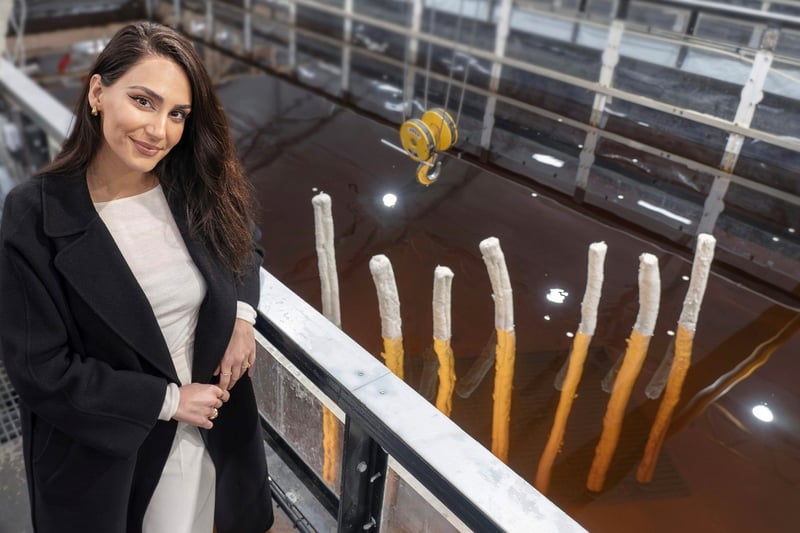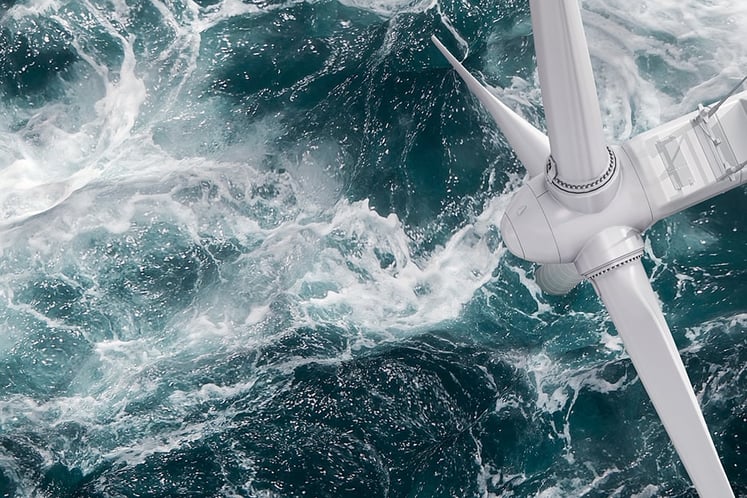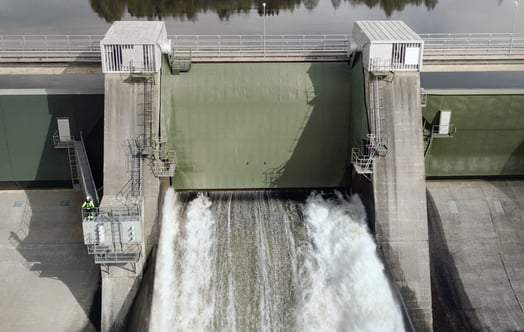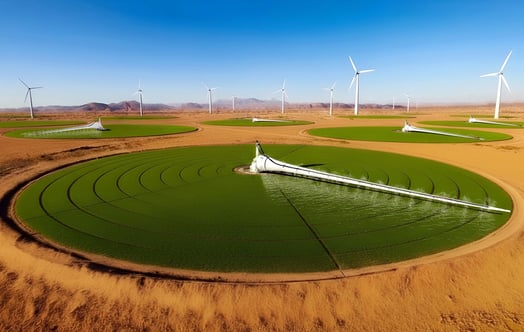Persuading fish to find their way past hydro power plants successfully has presented a challenge for a long time. Vattenfall and Cellufy are now working together to trial a solution that involves using dancing rods made of water-resistant cellulose foam to guide the fish in the right direction.
The Vattenfall laboratory in Älvkarleby is conducting research in a number of fields that relate to energy generation. One of the large halls is home to the Laxelerator (“lax” is the Swedish word for salmon). This is a test facility that includes two pools, 24 metres long and two metres deep, for studying fish behaviour in flowing water. Development engineers and development biologists are working here to come up with ways to encourage salmon and other fish to find their way past hydro power plants.
Successful tests are currently being performed using rows of dancing rods made of foam. The tests show that when salmon smolts – that is, salmon about 15 cm long that have begun migrating downstream towards the sea – swim towards the rods, they identify the rods as an obstacle and have no desire to swim through them. The fish follow the row of dancing rods instead, thereby persuading them to choose a safe route alongside the power plant’s water intake.
Grates are the most conventional way of preventing fish from passing through turbines at power plants. These slow down the water, though, reducing electricity generation.
“We have previously conducted tests of behavioural measures such as bubble curtains. The results were good, but we were searching for a solution that did not need large installations or energy inputs. So we found inspiration in seaweed, kelp, and came up with an idea – that long foam rods could share the same characteristic, moving and dancing in the current and so having a deterrent effect on the fish,” says Karolina Carlström, an engineer at the Vattenfall Research & Development department who is responsible for the studies.
Foam plastic rods were used to test the method initially, but Vattenfall had no desire to risk spreading microplastics throughout the rivers. This was why they contacted KTH Royal Institute of Technology in Stockholm and researcher Jowan Rostami, doctoral student working with fibre and polymer technology. She is conducting research into bio-based aerogels, a porous, spongy material made from cellulose fibres. Her start-up company, Cellufy, worked in partnership with Vattenfall to develop a water-resistant, cellulose-based foam material.
“The challenge we had was to make the material stable in water so that the rods would not break, flexible so that they could sway, and buoyant so that they would remain upright in the water. Many people have attempted to develop this kind of buoyant bio-based material offering stability in water, and our success is largely due to the support offered by Vattenfall. We perceive a wide range of applications for the new material,” says Jowan Rostami, who has now filed two patent applications related to the innovation.
Henrik Viklands, who is in charge of Vattenfall’s hydro power biodiversity programme, believes that these dancing rods could have a major impact on fish as the technology is so simple to introduce.
“I perceive a great deal of potential in making this technology work. The rods do not slow down the water, so there are no losses in electricity generation, and turbines and nature are not harmed. Any rod that breaks or comes loose is broken down. Maintenance is easy, too – all you have to do is fit a new rod if one breaks.”
Next phase beginning
The next step will be to refine the recipe for the material and optimise the hydraulic characteristics so that the rods are of the right thickness and length and offer the correct buoyancy. Cellufy’s innovative material has attracted a great deal of attention from several quarters, and the project has recently been granted development funding by Vinnova, the Swedish state innovation fund.
“Ultimately, we hope to work with Cellufy to develop a rod design and behaviour that works to divert fish in a wide range of water speeds and depths. The material also offers major potential for use in other projects as part of our biodiversity programme. A new application has been discovered thanks to Cellufy’s successful results over the past year: we believe the material can be used to build floating islands in our reservoirs where birds can nest," says Karolina Carlström.
“When all the pieces have fallen into place, this could be a ground-breaking solution if the outcome is as we hope. Harnessing renewable resources from the forest industry while resolving fish migration and biodiversity challenges is a win-win for lots of parties,” she says.Jowan

Jowan Rostami, CEO of Cellufy. The unique bio-based foam material in the dancing rods is water-resistant and buoyant and is expected to have a wide range of uses.
Vattenfall laboratory in Älvkarleby
Vattenfall’s Research & Development department has been developing technology for over 80 years at its laboratory in Älvkarleby. Its initial core business involved plan modelling of hydro power plants and dams with a view to improving dam safety. Nowadays, it conducts specialised research and development in all energy sectors. There is a great deal of emphasis on smart electrification, modern digitalisation and lower carbon emissions, as well as biodiversity, and it uses drones, robots, AI, digital modelling and fine engineering.
The Laxelerator, part of the Älvkarleby laboratory, is a stream aquarium where fish can be studied in flowing water. This facility mimics a small-scale intake channel and is two metres deep, 25 metres long and a total of four metres wide, in two parallel sections. Fish are used in the Laxelerator to test migration measures.
Cellufy
Cellufy is a deeptech company with the ambition to achieve sustainability through bio-based materials for both new and existing uses. Find out more on the Cellufy website

Subscribe to the newsletter THE EDIT
THE EDIT is Vattenfall's new monthly newsletter. Each issue highlights a new burning issue from the world of sustainable energy and fossil freedom.




